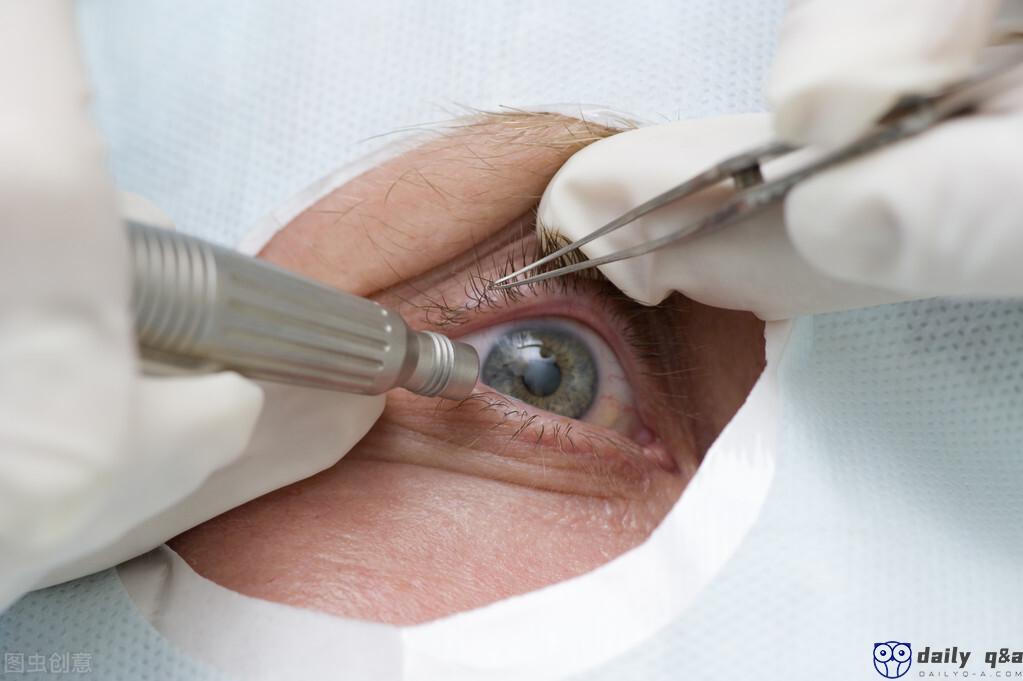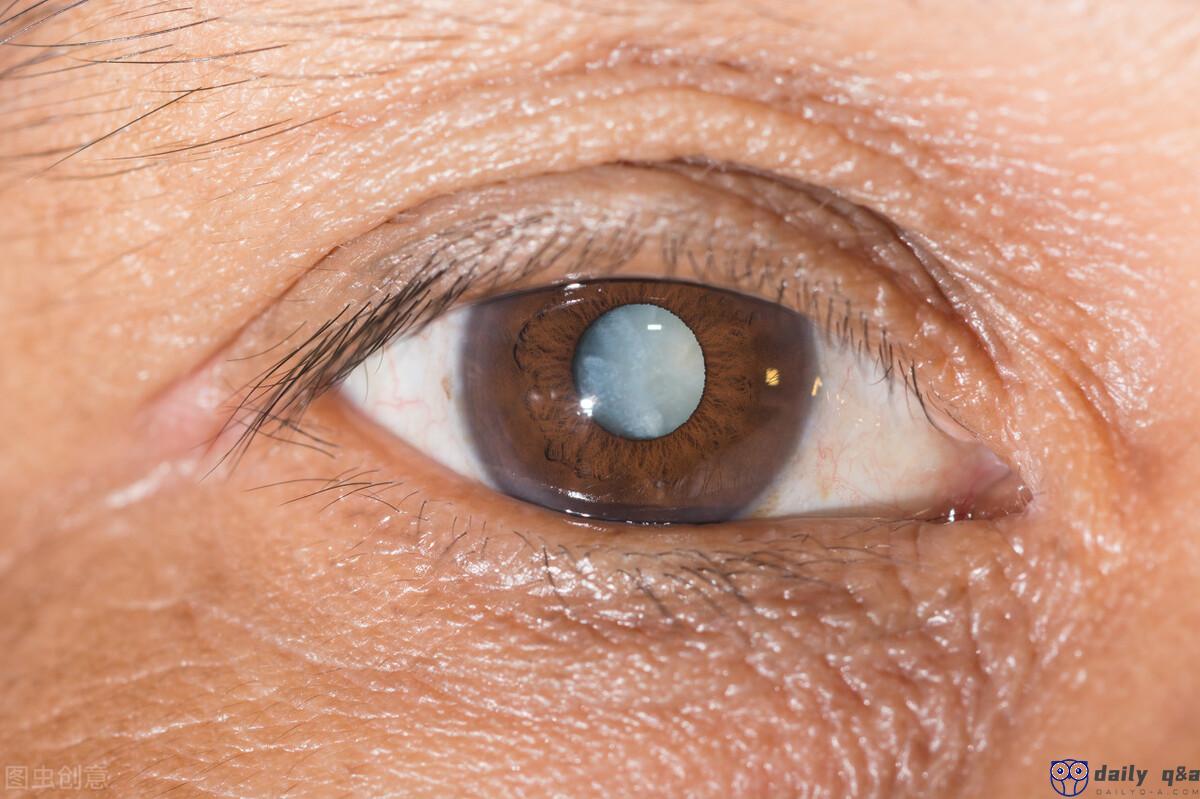Cataract is a common disease of the elderly, do I need to wait for the blindness of the eyes to be t

1. What is going on with cataracts
Cataract refers to the opacity of the lens in the eyeball. The lens changes from transparent to opaque, which prevents light from entering the eye, thereby affecting vision. When the lens opacity is mild or small in the early stage, it does not affect vision, and it will gradually worsen until blindness.
The vision loss caused by cataract cannot be corrected by wearing glasses. Cataracts can be divided into congenital cataracts, traumatic cataracts, toxic cataracts, metabolic cataracts, and hormone-induced cataracts according to their different causes.
Congenital cataracts are genetically related, or caused by viral infections, rubella infections, mumps, etc. during the mother's pregnancy.
Senile cataract is a metabolic disorder with increasing age and nutrition. The lens gradually changes from transparent to opaque, and the resulting turbidity becomes senile cataract.
Nowadays, cataracts are common in the elderly, so the elderly have decreased vision and blurred vision, so they should go to the ophthalmology department for examination in time. If a cataract occurs, phacoemulsification of the cataract and intraocular lens implantation are required to restore the vision of the patient.
2. How to treat early cataract
There is no need for treatment in the early stage of cataract, and drug treatment has no obvious effect. When it affects vision, it can be treated with surgery.
The treatment plan for cataract varies according to the degree of opacity of the lens in the patient's eye, as follows:
1. It does not require treatment if vision does not decrease in the early stage;
2. If the vision is reduced, surgical treatment is needed, because the only, practical and effective way to treat cataracts is surgical treatment, which cannot be treated by glasses correction. The most common operation now is phacoemulsification and intraocular lens implantation. This operation is effective and safe, and can improve vision.
If the cataract is not treated as soon as possible, it may lead to severe blindness and serious consequences, which can cause some complications of cataract, such as uveitis and glaucoma. Therefore, cataracts should be avoided as much as possible in daily life, and strong light stimulation should be avoided. For example, wearing sunglasses can prevent ultraviolet rays from causing cataracts.

3. Do cataracts have to be mature before surgery?
Cataracts do not need to be mature before surgery.
Cataract is the turbidity of the lens in the eye, and the lens changes from transparent to opaque. The vision loss of cataract cannot be improved by correcting with glasses.
Cataracts are divided into senile cataracts according to different reasons. Senile cataracts are very common, just like the human body has white hair when it is older. Cataracts are currently undergoing phacoemulsification and intraocular lenses are inserted. Therefore, the operation cannot be performed after maturity, and the operation should be performed earlier. If the visual acuity drops below 0.5 and affects the visual acuity, surgery is required to avoid complications such as uveitis or glaucoma caused by overripe cataracts.
Therefore, the current phacoemulsification and intraocular lens surgery should be performed earlier, and the surgery cannot be performed later when it is mature.
4. Can cataract surgery be done when I am older?
Cataract surgery can be done when you are older.
Cataract surgery is not limited in terms of age. The current surgical method is phacoemulsification and intraocular lens implantation. The surgical incision is as small as 2-3mm, and the incision is not sutured. The operation time is also very short, and the recovery after the operation is very fast. There is little trauma to the eye.
As China enters an aging society, more elderly people will need cataract surgery to restore vision and improve the quality of life.
As long as the elderly are in good physical condition, they can generally undergo surgery. As long as cataract patients are treated in time after the onset, their age will not affect the effect of cataract phacoemulsification. Senile cataracts and concurrent cataracts, as long as the eye condition and general conditions permit, even the elderly over 100 years old can still obtain the effect of cataract restoration surgery as they wish.
Because the operation time is short and there is no pain, as long as the patient has no serious other diseases, can lie down without coughing, cataract removal and intraocular lens implantation can be performed, and even centenarians can have a bright reconstruction.
5. Common problems in cataract surgery.
A common problem with cataract surgery is that if the cataract is not operated as soon as possible, it will cause cataract complications, such as uveitis, eye pain, and secondary glaucoma. Therefore, the elderly should go to the hospital for examination as soon as possible after they have cataracts, and perform operations as soon as possible to make their eyes bright again.
Cataract refers to the cloudiness of the lens. The lens in a normal person’s eye is transparent, similar to a camera lens, and can be adjusted so that the eyes can see far, center, and close. However, due to human aging or various reasons, the lens becomes cloudy, thickened, and hardened to varying degrees. If there is no normal adjustment function, symptoms such as blurred vision will occur.
With the continuous development of medical technology and the upgrading of medical equipment, cataract surgery has been very mature and safe. Now the mainstream surgical method is cataract phacoemulsification, combined with intraocular lens implantation. The surgical incision is small, no sutures are needed, and the vision is restored quickly. Generally, the effect of anesthesia can be achieved by applying eye drops under topical anesthesia, and the entire operation can be completed without pain for the patient.

6. Will floaters become cataracts?
Floaters do not become cataracts.
Floaters refer to the opacity of the vitreous body, while cataract refers to the opacity of the lens. Floaters are not a manifestation of cataracts. The two are different, so the treatment is different. Cataracts can be implanted with artificial lenses through phacoemulsification to improve vision.
Floaters refer to the liquefaction and turbidity of the vitreous body. As the age increases, the vitreous body gradually liquefies from a jelly-like state and becomes an uneven state. There are black shadows flying in front of the patient's eyes, which are easier to find in a bright state, so after cataract surgery, floaters can be significantly worsened.
Floaters can be divided into physiological floaters and pathological floaters. People with myopia often have more obvious physiological floaters. They need to go to the ophthalmology department for examination to understand the condition of the patient's fundus to determine whether they need treatment.
There are various reasons for the onset of cataracts, such as aging, heredity, local nutritional disorders, immune disorders, and trauma can cause metabolic disorders of the lens, leading to lens protein degeneration and opacity. The light at this time is blocked by the turbid crystals, and there is no way to project it on the retina, causing things to be blurred.
As people age, the possibility of these two eye diseases will increase, and the elderly mostly occur over 40 years old.
Copyright notice
This article only represents the author's point of view, not the standpoint of this station.
This article is authorized by the author and cannot be reproduced without permission.